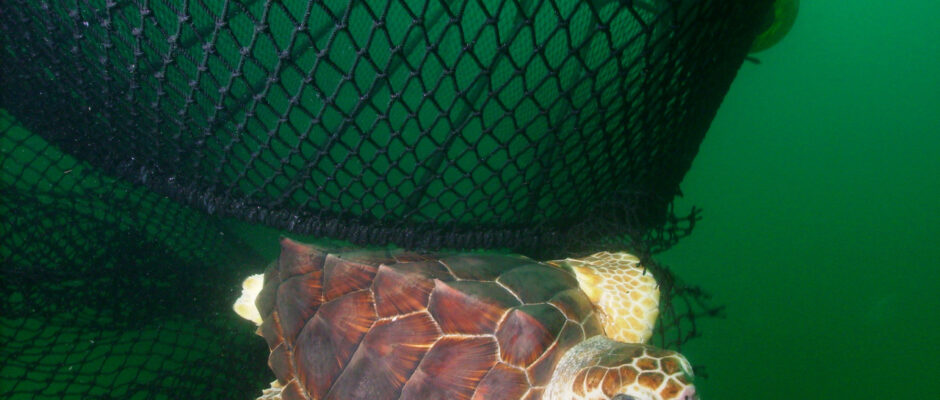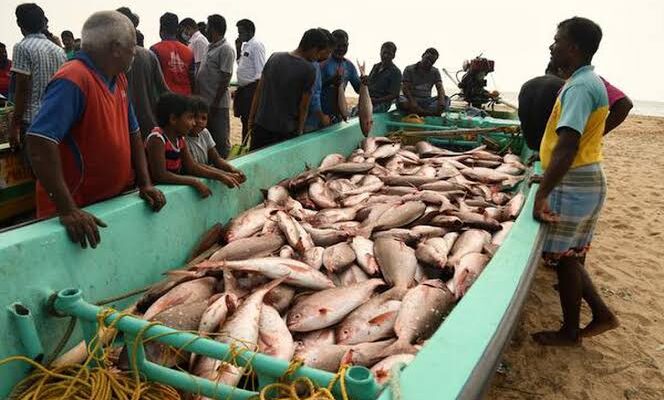Turtle Excluder Devices (TEDs): A Tool for Sea Turtle Conservation and its Implementation in Indian Fisheries
Introduction Turtle Excluder Devices, commonly known as TEDs, are specialized devices that allow a captured sea turtle to escape when caught in a fisherman’s net. These devices are made of metal bars and mesh that fit inside the neck of a trawl net. While shrimp pass between the bars to the back of the net, turtles and other larger animals bump against the metal grid and escape through a flap in the mesh. Design and Operation In particular, sea turtles can be caught when bottom trawling is used by the commercial shrimp fishing industry. In order to catch shrimp, a fine meshed trawl net is needed. This results in large amounts of other marine organisms being also caught as bycatch. When a turtle gets caught or entangled in a trawl net, it becomes trapped and is unable to return to the surface. Since sea turtles are air-breathing animals with lungs, they cannot survive long underwater without surfacing and will eventually drown. The use of the devices ideally allows all bycatch larger than ten centimeters to escape the nets unharmed. This selectivity is achieved by metal grids integrated into the trawl net structure. The grids act as a barrier for keeping large creatures such as turtles from passing through the bars into the back of the net. A small opening in the net is then available either above or below the grid so that the creatures that are stopped by the TEDs are allowed to escape the net, relatively unharmed. History and Implementation The first TED was based on a device called the jellyball shooter, that is used to remove cannonball jellyfish from shrimp trawl. TEDs were later developed in the 1970s by Wil Seidel, who worked for NOAA. In 1987, the United States required all shrimp trawlers to equip their nets with turtle excluder devices. Two years later the shrimp-turtle law was implemented. This required all countries that export shrimp to the US to certify that the shrimp they shipped were harvested by boats equipped with TEDs. Implementation in India In 1996, the government of India proposed legislation for the requirement of modified “indigenous” TEDs, which they called TSDs (turtle saving devices), to be used by local fishermen. This was a response to the declining olive ridley population that were nesting in beaches such as in Odisha. The Marine Products Export Development Authority (MPEDA) is pushing for necessary reforms in marine products act with state governments that will facilitate lifting of the ban by United States imposed two years earlier to make India more responsible toward turtle prevention. The change in design is being worked out jointly by the Central Institute of Fisheries Technology (CIFT) and Marine Products Export Development Authority (MPEDA) as the US has decided to continue with its ban on wild caught shrimps following reports on non-use of TEDs in fishing nets. ICAR-CIFT has modified the existing TED design that was used earlier. The new design by CIFT, MPEDA and National Oceanic and Atmospheric Administration (NOAA) was developed as per the recommendations of NOAA and MPEDA, as well as taking into account the needs of the Indian trawling sector. Conclusion Turtle Excluder Devices (TEDs) have proven to be an effective tool in promoting sea turtle conservation. While there have been challenges in their implementation, particularly in the commercial shrimp fishing industry, efforts are being made to improve their design and encourage their use. In India, organizations like MPEDA are working towards implementing TEDs in the fisheries sector, demonstrating a commitment to sustainable fishing practices and the preservation of marine life.






